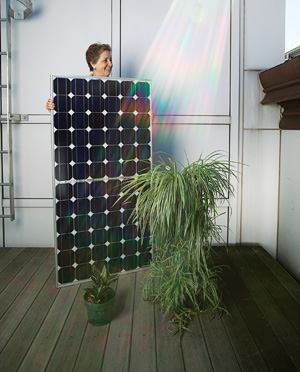In separate discussions, Frankel, Loftness, and former American Society of Heating, Refrigerating and Air-Conditioning Engineers (ASHRAE) president Kent Peterson all pointed to the buildings of the 1920s as models for energy-efficient design. These structures were designed with daylight wells, good thermal mass, and natural cross-ventilation. “They’re passive buildings,” says Loftness. “You can run them easily. It’s important to keep them in our portfolio.”
Frankel—who has looked carefully at more LEED buildings than almost anybody—says, “If you look at the characteristics of buildings that are performing well, you don’t see all these funky, cutting-edge technologies that are driving the energy.” Instead, he says, what you see is really good design integration?the designers have taken a bunch of stuff they know how to do, then put it together in a sensible package that works. “Effective design is what drives energy performance,” he says.
Getting to 2030
According to the NBI report, most LEED platinum and gold buildings are already meeting the Architecture 2030 Challenge’s interim target of reducing carbon emissions to 50 percent of current averages by 2010. “But LEED is still not the mainstream driver,” says Loftness. “It doesn’t matter how many times we tweak LEED, it’s not going to be enough unless there’s a federal focus on the whole.”
Platinum and gold buildings are still considered state-of-the-art. It’s implausible to imagine 2030’s interim goal being met on a wide scale within two years.
Although LEED may still seem to fit a boutique niche, the growth of its techniques is more widespread than the reported numbers. While only half of KieranTimberlake’s clients aim for certification, the firm designs all their projects with a similar ethic and approach. Procter & Gamble is an example of a corporate citizen that takes a similar view. “Our design standards are very consistent with LEED,” says Larry Bridge, workplace and infrastructure solutions manager for the company, which has not sought LEED on a project to date.
Tech company Integrated Environmental Solutions offers free software that can predict the energy use and carbon emissions of a building model in SketchUp or Revit. CEO Don McLean acknowledges that, while his VE-Ware is a good tool for implementing these strategies, tools alone won’t get it done: “We’ve got to get back to the fundamentals of architectural design,” he says. “It’s about looking at building mass, shape, form.”
Owens notes that the USGBC is doing everything it can to speed up the process. With LEED 2009, the existing buildings category gets more attention because it offers a quicker feedback loop for improvements (not to mention the previously noted advantages that many older buildings have over new construction). While Owens remains optimistic, he notes that the scientific community is constantly recalculating the levels of greenhouse gas that need to be met. The current level of carbon dioxide in the atmosphere is 385 parts per million (ppm); a new paper suggests that the right target level might be 325 ppm. “We’ve been shooting at 550 for the past two years, so our trajectory is all wrong to begin with,” he says.
Which gets us back to science—and specifically, building science. Our still nascent knowledge of this discipline is our inconvenient truth. For more than half a century, we’ve built with ever cheaper and thinner and slicker materials while we’ve asked our engineering colleagues to pump them full of whatever heating and cooling was necessary. In doing so, we lost a balance between buildings and nature that had been part of an architect’s repertoire since before Vitruvius.
We can take some solace in the fact that architects have stepped up in the past decade and begun to rapidly address these problems. But what we don’t know right now?what former Secretary of Defense Donald Rumsfeld once famously called the “unknown unknowns”—remains vast and is a result of decades when our educators and professionals chose to favor aesthetics and expedience over firmness and commodity.
“There’s an urgency with 2030,” says Frankel. And our responsibility to learn and change is imperative.
